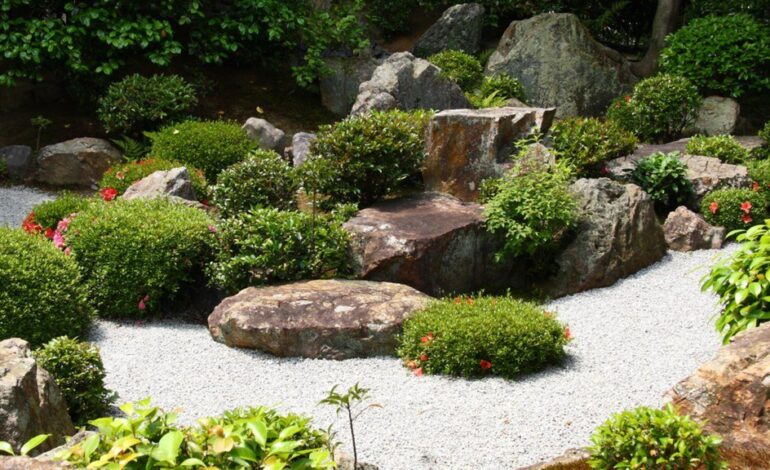
Complete Guide on Choosing the Right Sand for Landscaping Projects
When it comes to landscaping, every detail matters. You might have the perfect design in mind, but if you’re not using the right materials, the results can fall short of expectations. One key element that often gets overlooked is sand. Yes, sand! It’s not just about beaches and deserts—it’s a critical component of many landscape projects. Choosing the right type of landscape sand can make all the difference between a project that thrives and one that struggles.
Why Sand Is Essential in Landscaping
You might wonder, why is sand so important in the first place? Sand plays multiple roles depending on the project. It can be a base for pavers, improve drainage in soil, or even act as a decorative element. Its versatility makes it indispensable, whether you’re laying a patio, creating a playground, or installing artificial turf. But not all landscape sand is created equal. Using the wrong type can lead to issues like poor drainage, structural instability, or even weeds popping up where they shouldn’t.
Types of Landscape Sand and Their Uses
Before you head to your local supplier, it’s important to know the different types of sand available and how they’re used. This isn’t a one-size-fits-all situation—each type of sand has unique properties that make it better suited for specific tasks.
1. Concrete Sand
Concrete sand is coarse and made from crushed rock. It’s an excellent base material for hardscape projects like patios or driveways. Its coarseness helps with drainage and provides a solid foundation for pavers.
2. Mason Sand
Sometimes called brick sand, mason sand is finer than concrete sand. Its smooth texture makes it ideal for filling joints between pavers, creating level surfaces, or even as a base for above-ground pools.
3. Play Sand
Designed for playgrounds and sandboxes, play sand is softer and free of harmful particles. While it’s not the most versatile option, it’s perfect for creating safe, kid-friendly areas.
4. Utility Sand
Utility sand is the all-purpose option. It’s used for filling, leveling, and improving soil drainage. If you’re looking for a cost-effective solution for general landscaping tasks, this is a good pick.
5. Silica Sand
Silica sand is highly refined and used primarily for specialty projects like artificial turf. Its fine grains help keep the turf blades upright and improve stability.
How to Choose the Right Sand for Your Project
Now that you know the types of sand available, how do you decide which one to use? Let’s look at the key factors to consider when selecting the best sand for your project.
1. Project Type
The first step is identifying your project’s requirements. Are you laying pavers, improving soil, or building a playground? For example, if you’re installing pavers, you’ll likely need both concrete sand for the base and mason sand for the joints.
You might also want to decide between wet cast or dry cast pavers. The difference between wet cast vs. dry cast pavers lies in their manufacturing process: wet cast pavers are poured into molds and cured in a controlled environment, making them more durable and often more aesthetically pleasing. Dry cast pavers, on the other hand, are made by compacting a dry mix, which makes them more affordable but potentially less uniform in appearance.
2. Drainage Needs
Poor drainage can wreak havoc on landscaping. If your project is in an area prone to water pooling, a coarse sand like concrete sand is your best bet. It allows water to flow through, reducing the risk of erosion or flooding.
3. Aesthetic Goals
Sometimes, sand isn’t just functional—it’s part of the design. Mason sand, with its smooth texture, is often used for decorative features like Zen gardens. Choose a type that aligns with your vision for the space.
4. Budget
While some types of sand are more affordable, others—like silica sand—can be more expensive. Balancing cost with project needs is essential. For instance, you wouldn’t want to use pricey silica sand for a basic filling job when utility sand would suffice.
5. Local Availability
Not all sand types are readily available everywhere. It’s worth checking with local suppliers to see what’s in stock. This can also save you money on transportation costs.
Common Mistakes to Avoid When Choosing Sand
Even with the best intentions, it’s easy to make mistakes when selecting landscape sand. Here are a few pitfalls to steer clear of:
- Using the Wrong Sand for Pavers – Skipping the proper base or joint sand can lead to shifting and instability.
- Overlooking Drainage – Forgetting to consider drainage needs can result in water pooling and damaging your project.
- Choosing Based on Price Alone – While budget matters, the cheapest option isn’t always the best fit for your project’s needs.
- Ignoring Quality – Low-quality sand can contain impurities that may affect the durability of your project.
Tips for Buying and Storing Sand
When you’re ready to purchase, keep these tips in mind:
- Buy in Bulk – For larger projects, purchasing sand in bulk is often more cost-effective than buying in small bags.
- Inspect Before Buying – Check the sand for consistency and quality. Avoid sand that feels overly dusty or contains debris.
- Store Properly – To keep your sand clean and dry, store it in a covered area or tarp it to protect it from the elements.
Sand Smarts for a Stronger Landscape
Choosing the right landscape sand might not seem like the most exciting decision, but it’s one of the most impactful. Whether you’re building a sturdy patio, crafting a safe play area, or creating a visually stunning garden, the right sand is the foundation of success. By understanding your project’s needs and matching them with the perfect sand, you’ll set yourself up for results you’ll enjoy for years to come.


